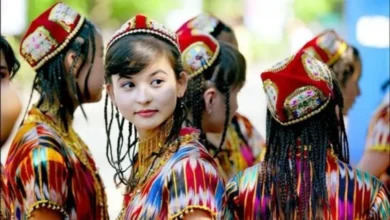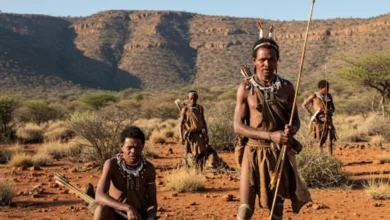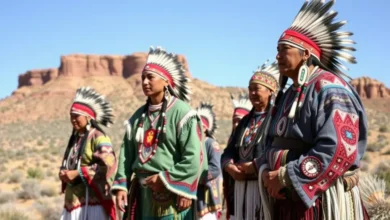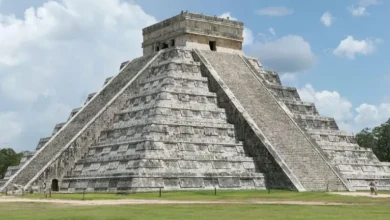High in the thin air of Nepal’s Himalayas, where snow-capped peaks pierce the sky, lives a community whose name is synonymous with strength, resilience, and the spirit of the mountains: the Sherpa.
More than expert climbers guiding adventurers up Everest, the Sherpa are a vibrant ethnic group with a rich cultural tapestry woven from ancient traditions, Buddhist faith, and an unbreakable bond with the world’s highest peaks. Let’s journey into their world—a world where mountains are sacred, courage is a way of life, and community is everything.

Who Are the Sherpa?
The Sherpa are an ethnic group from Nepal’s mountainous Khumbu region, near Mount Everest. Their name literally means “eastern people” (shar = east, pa = people) in Tibetan, reflecting their origins as migrants from eastern Tibet over 500 years ago.
Today, around 150,000 Sherpa live in Nepal, with smaller communities in India, Bhutan, and Tibet. While globally known as elite mountaineers, their identity runs far deeper: they are farmers, traders, artists, and devout Buddhists who view the Himalayas as both home and holy realm.
See also The Basque people: Cultural resistance between Spain and France
The Basque people: Cultural resistance between Spain and France
A Life Shaped by the Mountains
Life in the high Himalayas is harsh, but the Sherpa have thrived here for centuries. Their villages, like Namche Bazaar and Pangboche, cling to slopes at altitudes above 12,000 feet. Here’s a glimpse into their daily lives:
- Homes: Traditional Sherpa houses are built from stone and wood, with carved windows and roofs weighted with rocks to withstand storms. Inside, butter lamps flicker beside family altars adorned with Buddhist statues.
- Food: Staple foods include tsampa (roasted barley flour), potatoes, and sherpa stew (a hearty mix of noodles, vegetables, and meat). Butter tea, salted and rich, warms them against the cold.
- Livelihood: While some farm barley and potatoes, many work as trekking guides, porters, or run teahouses for adventurers. Tourism, especially Everest expeditions, has transformed their economy—but at a cost (more on that later).

The Sherpa and Mount Everest: A Double-Edged Legacy
When Edmund Hillary and Tenzing Norgay (a Sherpa) first summited Everest in 1953, the world took notice of the Sherpa’s unparalleled mountain skills. Today, they are the backbone of Everest expeditions:
- Fixing the “Death Zone”: Sherpa teams brave the Khumbu Icefall each climbing season, laying ropes and ladders over crevasses so others can follow.
- High-Altitude Heroes: They carry oxygen tanks, gear, and supplies to camps, often making 20+ trips through the lethal “death zone” (above 26,000 feet) in a single season.
- Sacrifice: Over 300 Sherpa have died on Everest, including 16 in the 2014 avalanche—a tragedy that sparked strikes for better pay and recognition.
While mountaineering brings income, many Sherpa wrestle with the risks. “We climb because we must,” says Kami Rita Sherpa, who holds the record for most Everest summits (30 as of 2024). “But the mountain is our mother. We respect her, fear her.”
Culture and Spirituality: Buddhism in Their Bones
To the Sherpa, the Himalayas are not just mountains—they are deities. Every peak, lake, and forest is sacred:
See also The Maya Civilization: A Journey Through Time, Innovation, and Mystery
The Maya Civilization: A Journey Through Time, Innovation, and Mystery
- Religion: They practice Tibetan Buddhism, blended with older animist traditions. Monasteries (gompas) like Tengboche are spiritual hubs, where monks chant prayers and spin prayer wheels.
- Festivals:
- Mani Rimdu: A colorful masked dance festival celebrating Buddhism’s triumph over evil. Villagers gather to watch monks perform in elaborate costumes.
- Losar: Sherpa New Year, marked by feasts, chang (barley beer), and hanging prayer flags to bless the coming year.
- Taboos: Cutting trees near monasteries or hunting wildlife is forbidden, reflecting their deep ecological respect.
Sherpa Traditions: Threads of Identity
- Clothing: Sherpa wear thick bakhu (woolen tunics) tied with belts, and angi (colorful aprons) for women. In winter, they don yak-wool hats with ear flaps.
- Art: Intricate thangka paintings (Buddhist scrolls) and wood carvings of deities adorn homes and temples.
- Language: They speak Sherpa, a Tibetan dialect, but many learn Nepali, English, or Hindi for work.
Challenges: Balancing Modernity and Tradition
The Sherpa face pressing challenges:
- Climate Change: Glaciers like the Khumbu are melting, threatening water sources and increasing avalanche risks.
- Tourism Impact: While tourism fuels the economy, litter on Everest and crowded trails strain their environment and culture.
- Youth Exodus: Younger generations often leave for education or jobs abroad, risking the loss of traditional knowledge.
Yet, hope persists:
- Community Action: Sherpa-led groups like the Sagarmatha Pollution Control Committee clean Everest trails.
- Education: Schools in Khumbu now teach Sherpa language and culture alongside science.
- Global Advocacy: Climbers like Nirmal “Nims” Purja (star of Netflix’s 14 Peaks) use fame to highlight Sherpa contributions.

How to Support the Sherpa People
Travelers can engage ethically:
- Hire Local Guides: Ensure Sherpa earn fair wages.
- Respect Sacred Sites: Follow rules at monasteries and avoid littering.
- Learn Their Stories: Read books like Into the Silence or watch documentaries like Sherpa (2015).
Conclusion: The Unbreakable Spirit of the Sherpa
The Sherpa are more than mountain guides—they are storytellers, guardians, and a living bridge between earth and sky. Their courage on Everest is matched only by their devotion to community and faith. As climate change and globalization test their way of life, the Sherpa remind us that resilience isn’t just about surviving the impossible; it’s about holding fast to who you are, no matter how the world shifts.
In the words of a Sherpa proverb:
“A glacier may melt, but the mountain remains.”
So too does the spirit of the Sherpa endure—rooted in the Himalayas, yet touching the heavens.
Planning a trek? Visit the Sherpa Museum in Namche Bazaar to dive deeper into their history. And remember: when you look at Everest, you’re not just seeing a mountain—you’re witnessing a culture’s soul. 🏔️



